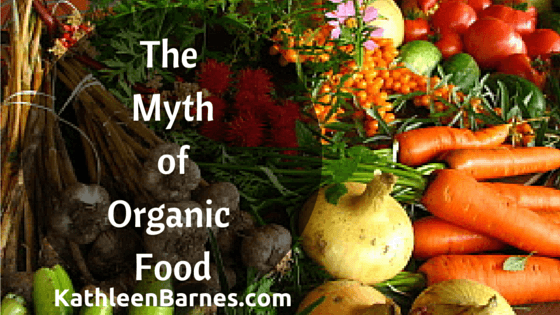Organic food is good for you and good for the planet. Most of my readers would agree on that point.
In the U.S., organic foods are subject to federal regulations that govern how the foods can be grown, raised and processed.
Definition of organic foods
In general, organic foods and livestock must be grown without the use of non-organic pesticides, insecticides and herbicides. Livestock must be raised without the routine use of so-called prophylactic antibiotics (an oxymoron if there ever was one!) and fed a generally healthy diet.
Processed organic foods (another oxymoron, in my opinion) must be free of artificial additives and preservatives and they must not result from genetically modified ingredients or be subjected to food irradiation or chemical ripening.
What a wonderful toxic soup!
Here are other differences between conventional farming and organic farming:
Conventional farmers:
- Apply chemical fertilizers to promote plant growth. Spray insecticides to reduce pests and disease.
- Use chemical herbicides (mainly RoundUp and toxic glyphosates) to manage weeds.
- Give animals antibiotics, growth hormones and medications to prevent disease and spur growth.
Organic farmers:
- Apply natural fertilizers, such as manure or compost, to feed soil and plants.
Use beneficial insects and birds, mating disruption or traps to reduce pests and disease. - Rotate crops, till, hand weed or mulch to manage weeds.
- Give animals organic feed and allow them access to the outdoors. Use preventive measures — such as rotational grazing, a balanced diet and clean housing — to help minimize disease.
Organic food is now big business
Until the 1990s, organic food growers were largely Mom and Pop farms and their produce was sold in local farmers markets. Not only were these farms sustainably operated, the food traveled a short distance from farm to market to table and was therefore environmentally sound and highly nutritious.
Now organic food and beverages count as the fastest growing segment of the U.S. food industry with upwards of $39 billion in annual sales in 2014—two and one half times the reported sales in 2008.
As a result, the organic food movement has become big business. With that comes the baggage of agribusiness, including shaky standards full of loopholes, including the import of so-called “organic” ingredients from other countries with few, if any, organic certification standards.
Organic food is higher in nutrients
Organic food is good for you. Research shows organic food contains 50% more nutrients, minerals and vitamins than produce that has been intensively farmed. It’s questionable whether that is still true in view of the mega farming practices that include soil-depleting intensive single crop production and dairy operations where cows rarely if ever, see the light of day.
Organic food may not be organic at all
Buyer beware: Organic food isn’t all it’s cracked up to be.
You can pretty much trust foods that contain only one ingredient. Fruits, vegetables, eggs, dairy products and meat that are labeled 100% organic have fulfilled the ever-more-lax USDA certification standards and are marked with a small “USDA Organic” seal.
However, foods that contain more than one ingredient, like cereals or bread are much more complex. Read your labels carefully:
- A food is 100% organic only if it contains label that specifically says so.
- If a food carries a “USDA Organic” label, it means that 95% of the ingredients are organically produced. The other 5% is anybody’s guess.
- Worst of all, if the label says “Made with Organic Ingredients,” that means the product must contain at least 70% organic ingredients. In other words, 30% can be non-organic and contain artificial preservatives, additives and other harmful substances.
Organics are more expensive
Organic food is generally more expensive than conventionally produced food, largely because of the labor-intensive farming methods necessary to produce organics.
However, many supermarket chains now carry private label “generic” organic foods at more affordable prices and there are supermarket chains like Aldi’s and Trader Joe’s who have made deep commitments to sustainable and organic products.
Consider the pesticide load
If your budget won’t permit going entirely organic, consider the chart below to help you decide which foods are worth the expenditure:
Here’s the list of the DIRTY 50, from worst to best non-organic produce:
- Strawberries
- Apples
- Nectarines
- Peaches
- Celery
- Grapes
- Cherries
- Spinach
- Tomatoes
- Sweet bell peppers
- Cherry tomatoes
- Cucumbers
- Snap peas—imported
- Blueberries—domestic
- Potatoes
- Hot peppers
- Lettuce
- Kale/collard greens
- Blueberries—imported
- Green beans
- Plums
- Pears
- Raspberries
- Carrots
- Winter squash
- Tangerines
- Summer squash
- Sapp peas-domestic
- Green onions
- Bananas
- Oranges
- Watermelon
- Broccoli
- Sweet potatoes
- Mushrooms
- Cauliflower
- Cantaloupe
- Grapefruit
- Honeydew melon
- Eggplant
- Kiwi
- Papaya
- Mango
- Asparagus
- Onion
- Sweet peas frozen
- Cabbage
- Pineapple
- Sweet corn (if non-GMO)
- Avocado
I have to add a personal note here: I know coffee is technically a vegetable. Certainly it is a staple of life for many of us. However, coffee is not included on the above list.
Coffee is one of the most pesticide intensive crops in the world. If you’re a coffee lover like I am, consider lowering your toxic load by buying organic coffee, better yet shade grown and fair traded to add to the eco-friendly perks. (Pun intended!)
My bottom-line advice:
Shop the perimeter of your supermarket. Base your diet almost exclusively on fresh fruits, vegetable, dairy products and meats. You might make a brief detour down the aisles for nuts, organic grains and oils. Frozen vegetables and fruits are sometimes cheaper and have lower pesitcide loads.
Buy organic as much as your budget will allow and use the “dirty 50” list to help you make you choices when you can buy organic.







